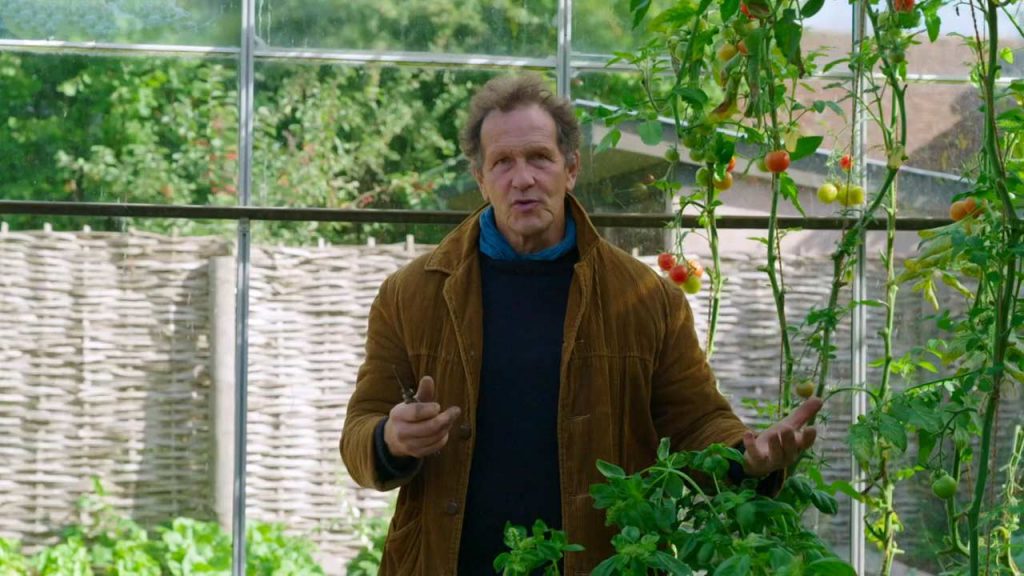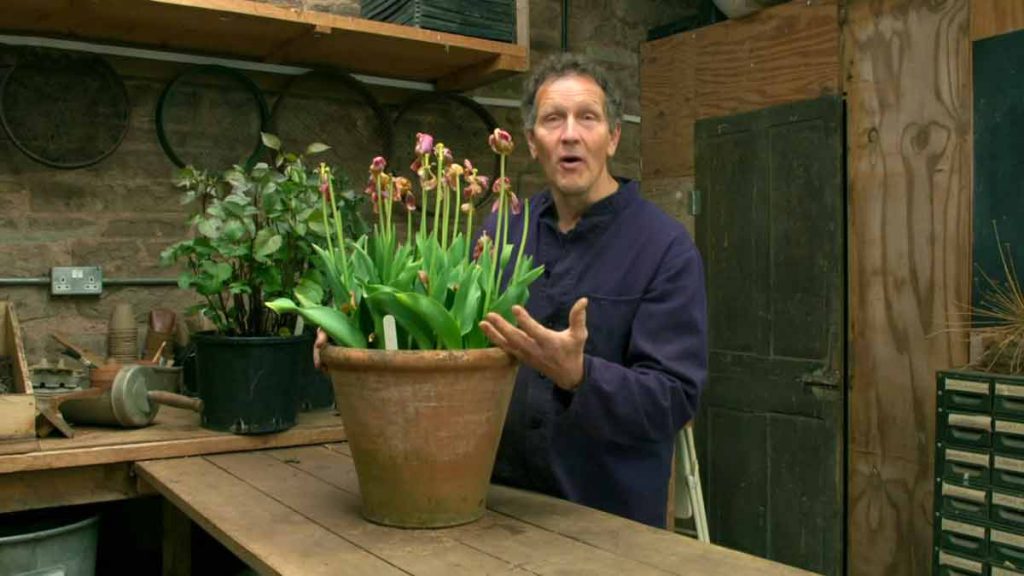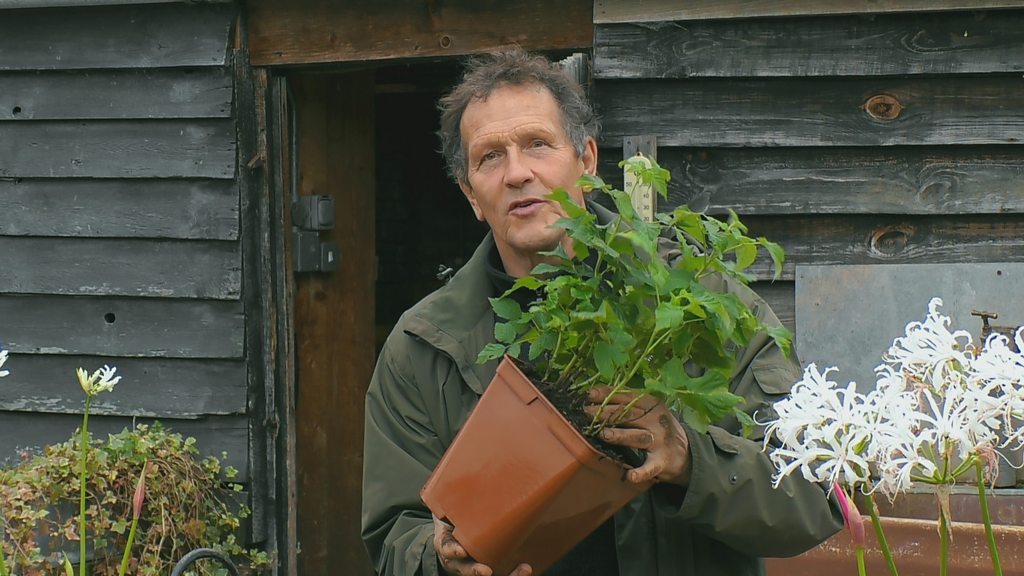Gardeners’ World 2021 episode 29: Monty is back at Longmeadow, getting stuck into more seasonal tasks. Joe Swift heads to Houghton Lodge Gardens in Hampshire, renowned for its walled kitchen garden and heritage fruit collection.
Alternative server
We visit Rachel de Thame’s garden, where she has been experimenting with growing different and unusual cut flowers. She is joined by floral artist and designer Hazel Gardiner as they both create their own unique flower arrangements. Plus lots of ideas and suggestions from our viewers’ own gardens.
Gardeners’ World 2021 episode 29
Growing winter salads
For many home gardeners, growing salad crops begins in spring and ends sometime during autumn. However, with a bit of ingenuity, there is no reason why growing salads should not continue right through the winter months. By sifting through salad-leaf cultivars for those that withstand lower light levels and temperatures, you can make a selection of salad leaves and herbs for winter. Sown from late summer well into autumn, you can produce a stimulating leaf palette – and much more cheaply than those sold in shops.
Growing salad leaves outdoors in winter without any protection can be problematic; plants provide a feast for pests such as slugs, snails, whitefly and flea beetle. Crops can also fail due to freezing weather and rain. In mild winters, especially in the South, crops can be grown outdoors, but there is always a risk as saturated soils and cold winds are anathemas to many vulnerable young plants.
Growing under cover
A little protection, using fleece, plastic or glass (such as small polytunnels or cloches), will generally ensure much better results when growing salads in autumn and winter. If resources allow, a larger polytunnel is
perfect for winter crops: it keeps off the wind and rain and provides plenty of growing space. Alternatively, an empty glasshouse can be filled with many seedtrays of leaves. Even brightly lit windowsills indoors can
provide suitable places for space-challenged gardeners to grow salads, especially if you are sowing late in the year.
Growing cut flowers
Many garden plants can be enjoyed as cut flowers and foliage in the home, offering cheaper and diverse alternatives to florist flowers. Borders can be adapted to provide cutting material throughout the year. Alternatively, dedicate a part of the garden to growing cut flowers.
When adapting existing borders, plant larger groups of annuals, perennials and bulbs suited for cutting to allow for picking without affecting the overall appearance of the border. Do not forget to incorporate a few well-chosen shrubs and grasses with interesting foliage. Use bulbs to extend the picking season.
If space allows, dedicate a part of the garden to growing just cut flowers. The advantage of a cutting garden over picking from borders is that it avoids depleting beds and borders, as well as providing a more productive planned area for the cut flower gardener. Plant or sow in rows; this makes weeding, staking and picking so much easier. Take the final spread of plants into account and allow access between the rows. If planted too close together, plants will fall into each other, get tangled and may be damaged, making them less suitable for harvesting. As taller plants are often grown for cut flowers, robust supports are usually needed.





Video not working
About to fix
try now